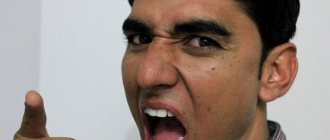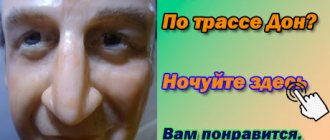What is Holotropic Breathwork
Holotropic breathing is a special breathing technique used in psychotherapy to gain awareness of repressed experiences. The holotropic breathing technique itself consists of intense rapid breathing, which results in hyperventilation of the lungs. Hyperventilation, in turn, leads to a narrowing of the blood vessels in the brain, turning off the cerebral cortex and engaging the subcortex in active work.
Don't forget to get your free online course on mindfulness meditation : get the course for free
There I show you the fastest and safest way to learn to meditate from scratch and bring a state of mindfulness into everyday life.
Harm and benefit of the method
Like any method or phenomenon, holotropic breathing has both positive and negative sides.
Benefits of HD
When used correctly, holotropic breathing is an effective way to get rid of long-standing psychological problems. Since there is a deep immersion into the subconscious, a person is able to discover repressed emotions and experiences, give them an outlet and level them out. Moreover, problems manifest themselves not individually, but as a whole block.
Therapy occurs independently, without the involvement of a psychotherapist. For example, in psychoanalysis, which is also based on the method of immersion in the unconscious, a person depends on the degree of qualification and integrity of the psychoanalyst and the decisions he makes.
You can practice sessions as often as necessary to achieve harmony and psychological comfort. HD is a great way to relieve everyday stress and tension.
Harm HD
In the professional environment, the attitude towards holotropic breathing is not unambiguous. Many scientists do not recognize it as a psychotherapeutic technique at all.
In two states of America, the use of a technique similar to HD, “rebirthing,” is prohibited at the legislative level. This is due to a fatality that occurred in 2000 with a 10-year-old girl during a rebirthing session. There are other examples of harm to health when using technology, including in Russia.
An argument against the use of HD is the fact that hyperventilation of the brain leads to the leaching of carbon dioxide from its cells and a sharp narrowing of blood vessels. This can cause deterioration in brain function due to the death of nerve cells.
In addition, despite the body’s existing protective resources, due to an excess of oxygen, cerebral edema and death can occur.
In this regard, the holonaut must be aware of the consequences that may occur, especially when using the method without the support of a sitter and the participation of a specialist.
Holotropic breathing in psychotherapy
Holotrope was invented by psychotherapists Stanislav and Kristina Grof as a replacement for psychotropic drugs used in psychotherapeutic sessions to release experiences repressed from consciousness.
Stanislav Grof noticed that under the influence of psychoactive drugs, when difficult emotions that were not previously recognized float to the surface of consciousness, a person begins to breathe more often and deeper. Further research showed that such breathing itself leads to the same effect as the use of drugs. Therefore, after the ban on psychoactive substances, Stanislav and Christina Grof replaced them with the practice of holotropic breathing. In itself, rapid breathing, turning off the protective mechanisms of the psyche, allows us to see and discharge the psychological material that our mental defense hides from us in our everyday state.
Technique for performing holotropic breathing
The holotropic breathing technique involves breathing more quickly and deeply. The usual instructions do not include clear parameters for frequency and depth, but suggest finding your own individual approach during practice. To a greater extent, the technique is an immersion in one’s experiences and analysis of the experience gained. Music is also of great importance, as it serves to stimulate the desired state of consciousness in the practitioner.
In total, four components of the holotropic breathing technique can be distinguished.
1) Deep, rapid and rhythmic breathing through the mouth with no pause between inhalation and exhalation
2) Musical accompaniment to stimulate the process
3) Immersion in deep experiences emerging from the subconscious
4) Analysis and expression of the experience gained in the form of drawings or other creative process
Holotropic breathing is performed in pairs: a practitioner (holonaut) and a sitter. A sitter is needed to monitor the situation, guide the practitioner, help get rid of muscle tension and for safety. Usually two sessions are carried out on one day, first one breathes, the second insures, and then they change.
A holonaut is a person who practices holotropic breathing.
Let's take a closer look at the execution technique:
So, remember the three main characteristics of breathing:
- breathing only through the mouth
- rhythmic
- deep
- frequent
- breathing only with the chest
- quick sharp inhalation and relaxed exhalation
The session itself looks like this:
- Lie on your back, spread your arms and legs freely as you feel comfortable
- Turn on music specially selected for the session (there are ready-made collections on the Internet)
- Close your eyes and do not open them during the session.
- Breathe as described above for several minutes
- Focus on your breathing technique and sensations in your body.
- Don’t be distracted by thoughts and images, keep your attention on your breathing and body
- If you experience cramps or severe tension, try to relieve tension and relax with the help of imagery
- The effectiveness of the session depends on how well you can relax
- After completing the breathing practice, you need to lie down and relax for at least 30 minutes.
Note
Some points are not taken into account. Experts, please be calm. Grof himself describes the technique as follows: “It is a combination of intense breathing, specially selected physical exercises and music.” (12).
Also his words: “This practice is contraindicated for those who suffer from heart and vascular diseases, those who have had serious emotional problems in the past that led them to hospitalization in psychiatric institutions. It is known that hyperventilation of the lungs can provoke epileptic attacks. There are also common sense contraindications, such as recent surgery, injury, or simply a serious illness.”
Since the technique was invented to replace psychedelics, and the same mushrooms or LSD are slowly being legalized in different countries, perhaps in 10-15 years it will be less relevant (13).
How to do holotropic breathing yourself at home
- Allocate time of about 1.5 - 2 hours, make sure that nothing distracts you during the session
- Ventilate the room for the session, find space so that you can lie freely on your back with your arms and legs outstretched
- Play pre-selected music for the session
- Use a holotropic session to resolve a specific psychological problem, decide what problem you want to solve
- Use the breathing technique described above to enter an altered state of consciousness
Holotropic Breathwork Practice
Why is Holotropic Breathwork needed? The result of practice should be the manifestation of blocks. They can manifest themselves in the form of bodily tensions that need to be relaxed. Here the sitter can help you by lightly pressing and massaging the area of the body block. Blocks can also appear in the form of pictures in the mind, thoughts and emotions. Forgotten life events, fears, or other sensations may come to mind. Your task is simply to experience the entire stream of consciousness, and after the session express it in free form using drawing, modeling from plasticine or any other creativity.
How often should you practice holotropic breathing? It is recommended to practice holotropic breathing following your own feelings of need. The answer to this question will be very individual for each person.
Recommendations for beginners when mastering the practice
The procedure can take from 2 hours to 7-8, and you need to be prepared for this. The quality of the session and the duration are not always related, but more often it is a long session. Some trainees want to quickly be left alone after the session, but the instructor believes that the end of the session is a reason to move on to activities. This could be, for example, dancing. Such a continuation of the session is normal; it is considered a complex, a release of the energy with which the person’s consciousness worked.
They note that the first 20 minutes are difficult for a beginner.
But after this he enters a state that is no longer scary or frightening for him. Although this is also possible. If you are scared, if you feel a sharp deterioration in your condition or growing panic, you can stop the session. Just say “Stop” and indicate your reluctance to continue. This is not a test of courage, but a voluntary experience; you should not continue if you are scared. Of course, it is impossible to say that all problems are solved with the help of one or two sessions of holotropic breathing. Moreover, experts assure that it will take at least 2 years of regular practice to achieve the final effect .
Beginners who come to groups often have questions about the cost of the lesson. It can't be cheap a priori. The organizers purchase a lot of things to make the process comfortable - from bags and napkins to tea, devices for subsequent art therapy. The requirements for the space where the session takes place are also strict. Finally, the training itself is long and expensive. Therefore, a session that costs 3,000 rubles is an adequate price for a session. If, of course, you are sure of the need to acquire such experience.
There is another unusual technique that allows you to look into your own subconscious - thanatotherapy. Read what it is in our review: “Thanatotherapy – a therapeutic introduction to death, patient reviews.”
Reviews about the practice of holotropic breathing
Here I have collected reviews from different people, both negative and positive.
- I had a session with an experienced trainer. During the practice, some memories actually surfaced in my mind and pain arose in my body. But does this make any sense? What did this give me? I did not notice any changes in myself after the session over time.
- I'm delighted with the session! But I want to warn you right away that you need to practice only under the supervision of a doctor or a good specialist. I experienced a very powerful release of accumulated experiences, as if my psyche had been completely renewed and cleansed. During the session, tears flowed, trembling ran through the body, convulsions occurred, but then such relief came. And this state of lightness remained with me for a couple of months.
- Well, it’s not enough just to enter the desired state with the help of holotropic breathing and achieve catharsis. You need to breathe intensely for quite a long time, about half an hour, which is physically difficult. In addition, you need to constantly concentrate on sensations.
Don't forget to get your free online course on mindfulness meditation : get the course for free
There I show you the fastest and safest way to learn to meditate from scratch and bring a state of mindfulness into everyday life.
Contraindications
Holotropic breathing according to Grof is still a subject of debate among experts. Some scientists do not recognize the simple technique as a technique, and in some regions of the United States such instructions are prohibited by law. Strict measures are associated with a death that occurred to a child during a session.
This is why holotropic breathing has contraindications. They also concern the chance of cerebral edema due to excess oxygen, which gives an additional risk of death. The holonaut must understand the possible consequences and not use the technique at home in the presence of chronic diseases.











